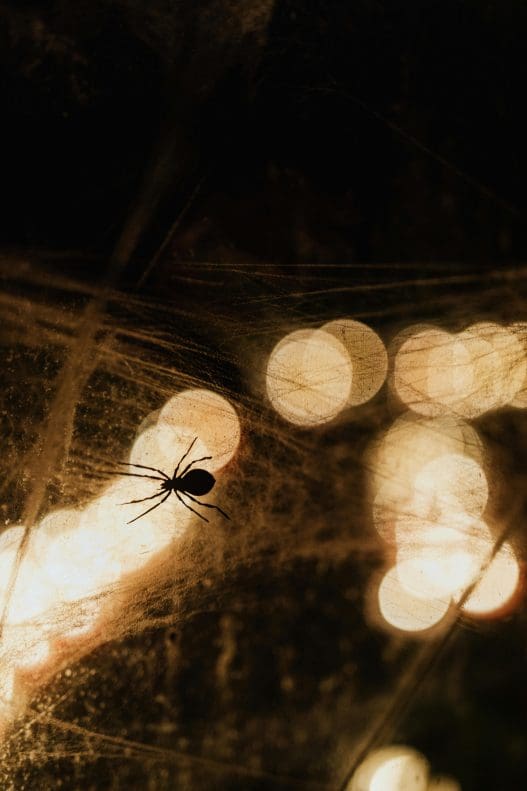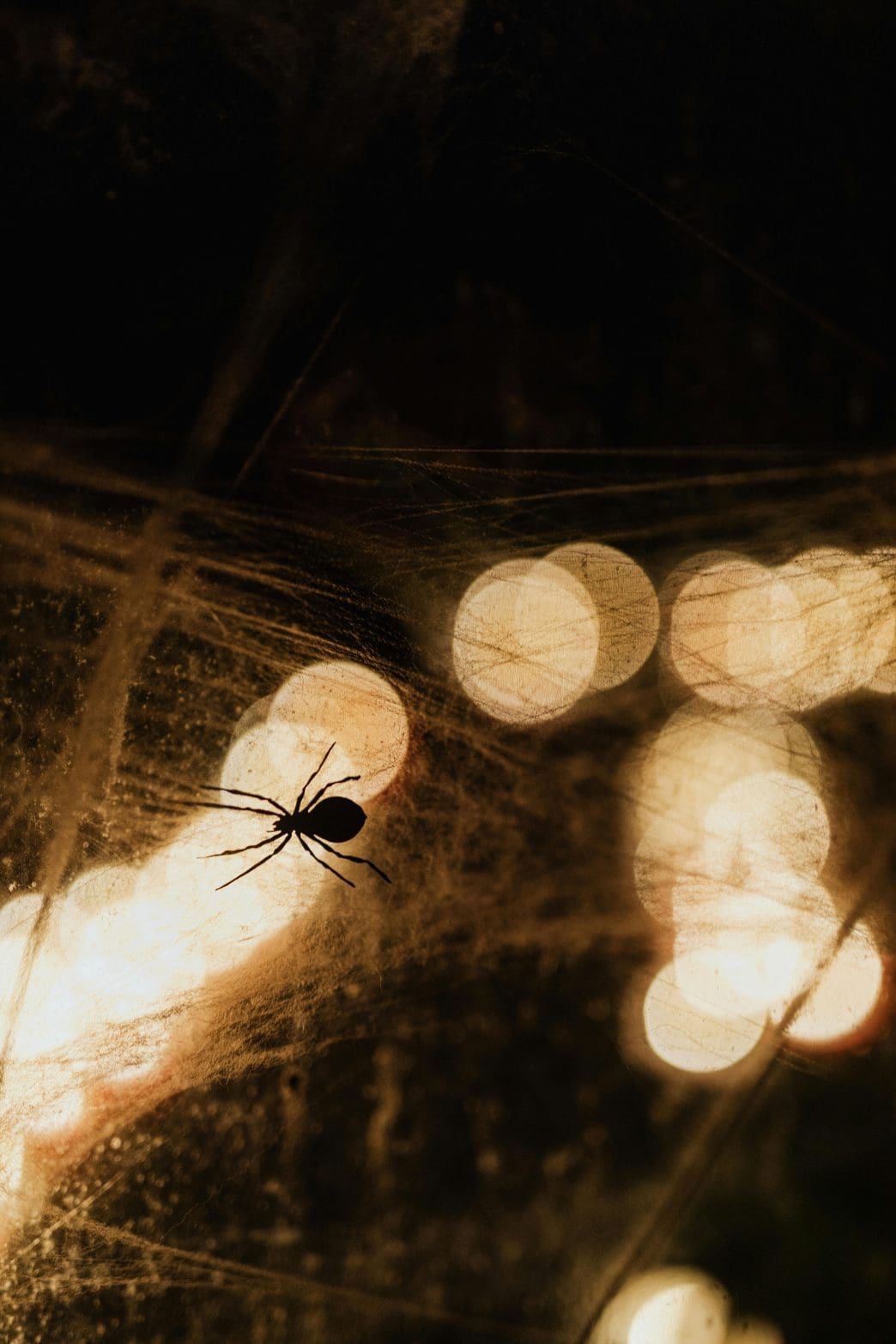Spiders may play a helpful role outdoors by controlling other insect populations, but most of us prefer to keep them out of our homes. If you are looking for a safer alternative to chemical sprays, then natural homemade DIY Spider Repellents can be highly effective, budget-friendly, and easy to make using everyday household ingredients.
1. Peppermint Oil Spray
Why this works:
Spiders rely on their sense of smell through their legs to navigate their environment. Strong scents, especially menthol-rich oils like peppermint, disrupt their sensory patterns and act as a strong deterrent. Peppermint oil contains menthol, which affects a spider’s ability to sense vibrations and chemical signals in its surroundings. Using this spider repellent in spray form helps you easily reach baseboards, corners, and window sills where spiders are likely to enter.
Materials:
- 10 drops of peppermint essential oil
- 1 cup of water
- 1 tablespoon of white vinegar
- Empty spray bottle
Instructions:
- Pour 1 cup of water into the spray bottle.
- Add 1 tablespoon of white vinegar to help the oil mix and increase repellent power.
- Add 10 drops of peppermint oil.
- Shake well to combine all ingredients.
- Spray around door frames, windows, baseboards, and known spider entry points.
- Reapply every 3 to 4 days for consistent protection.
2. Citrus Peel Polish
Why this works:
Citrus fruits such as lemons and oranges contain d-limonene, a compound toxic to spiders. The lingering scent of citrus also masks pheromone trails and entry markers used by spiders. When used to polish surfaces, it adds a fresh smell while acting as a chemical-free barrier. This DIY spider repellent is especially useful for kitchens, windowsills, and counters.
Materials:
- Fresh orange or lemon peel
- 1 tablespoon of white vinegar
- 1 cup of warm water
- Clean cloth
Instructions:
- Place the citrus peels in a jar with 1 cup of warm water.
- Add 1 tablespoon of white vinegar.
- Let it sit for 2 hours to infuse.
- Dip a clean cloth into the liquid.
- Wipe down counters, windowsills, and furniture edges.
- Repeat weekly or as needed.
3. White Vinegar Spray
Why this works:
The high acetic acid content in white vinegar disrupts spider pheromone trails and affects their nervous system. It also acts as a surface cleaner, making the environment less attractive to insects, which in turn reduces spider presence. This DIY spider repellent works well in kitchens, bathrooms, and basements.
Materials:
- 1 cup of white vinegar
- 1 cup of water
- Spray bottle
Instructions:
- Combine vinegar and water in a spray bottle.
- Shake thoroughly before use.
- Spray around window frames, corners, and behind appliances.
- Allow it to air dry naturally.
- Avoid using on natural stone or hardwood.
- Reapply every 5 days.
4. Cedarwood Chips
Why this works:
Cedarwood naturally contains aromatic oils that are toxic to spiders and other insects. The scent of cedar interferes with a spider’s ability to detect chemical cues and pheromones. This spider repellent DIY is ideal for closets, drawers, and storage bins.
Materials:
- Cedarwood chips or blocks
- Muslin or cotton pouch (optional)
Instructions:
- Place cedar chips in drawers, closets, or behind furniture.
- Use small pouches if you want to contain the mess.
- Replace the chips every 2 to 3 months.
- For stronger effect, lightly sand cedar blocks before use.
- Keep chips dry to prevent mold.
- Avoid using near sensitive pets like small rodents.
5. Eucalyptus Oil Cotton Balls as DIY Spider Repellents
Why this works:
Eucalyptus oil has strong antimicrobial and insect-repelling properties. Its pungent aroma disrupts spider movement and nesting patterns. Placing soaked cotton balls near entry points offers targeted protection that is safe and non-toxic.
Materials:
- Eucalyptus essential oil
- Cotton balls
- Small dish or foil tray
Instructions:
- Add 5 drops of eucalyptus oil to each cotton ball.
- Place them in trays or dishes near doorways, vents, and basement corners.
- Replace cotton balls every 7 days.
- For stronger scent, use a few drops daily.
- Store oil safely away from children.
- Keep cotton dry to avoid mildew.
6. Garlic Spray as DIY Spider Repellents
Why this works:
Garlic contains sulfur-based compounds that repel spiders and other pests by creating an invisible scent barrier. This spider repellent DIY leverages garlic’s strong odor to keep spiders away from walls, cracks, and foundation gaps.
Materials:
- 2 garlic cloves
- 1 cup of water
- Strainer
- Spray bottle
Instructions:
- Crush the garlic cloves and soak in water overnight.
- Strain the mixture to remove solids.
- Pour liquid into spray bottle.
- Spray around the house foundation, windows, and attic spaces.
- Reapply every few days or after rain.
- Avoid using near food-prep areas.
7. Baking Soda Line
Why this works:
Baking soda irritates spider exoskeletons and acts as a physical barrier. It is not poisonous but is unpleasant for spiders to cross. This spider repellent DIY is best for indoor window sills, baseboards, and basement edges.
Materials:
- Baking soda
- Spoon or salt shaker
Instructions:
- Pour baking soda into a shaker or spoon.
- Sprinkle a light, even line along walls and entry points.
- Refresh the line every few days.
- Sweep and replace as needed.
- Avoid areas where pets may disturb it.
- Store baking soda in a dry container.
8. Vinegar and Clove Oil Spray
Why this works:
Clove oil contains eugenol, a natural compound known for its insecticidal properties. When combined with vinegar, it becomes an effective dual-action spray that both repels spiders and removes chemical trails they follow. This spider repellent DIY is great for door frames, closets, and storage boxes.
Materials:
- 1 cup white vinegar
- 10 drops clove essential oil
- 1 cup water
- Spray bottle
Instructions:
- Add water and vinegar to the spray bottle.
- Drop in the clove essential oil.
- Shake well to combine.
- Spray around baseboards, under sinks, and behind shelves.
- Let air dry or wipe with cloth if preferred.
- Use once a week or after cleaning.
9. Cinnamon Stick Barrier
Why this works:
Cinnamon has a strong aroma that overwhelms spider receptors and discourages them from entering specific areas. The essential oils in cinnamon sticks release slowly, making them an excellent passive barrier. This spider repellent DIY method is low-maintenance and great for long-term prevention.
Materials:
- Whole cinnamon sticks
- String or small cloth bags
Instructions:
- Bundle cinnamon sticks using string or place in mesh bags.
- Put near heating vents, windows, or under furniture.
- Replace sticks every 4 weeks.
- Crush slightly if scent fades too quickly.
- Store unused sticks in airtight containers.
- Do not use near open flames.
10. Lavender Sachets as DIY Spider Repellents
Why this works:
Lavender’s calming scent for humans is highly irritating to spiders. The linalool in lavender disrupts their ability to detect safe nesting spots. This spider repellent DIY solution also freshens linen drawers and closets while deterring pests.
Materials:
- Dried lavender
- Small cotton or muslin bags
- Optional: a few drops lavender oil
Instructions:
- Fill each bag with dried lavender.
- Add a drop or two of lavender oil for stronger scent.
- Tie bags securely.
- Place in drawers, closets, or under furniture.
- Refresh with oil every 2 weeks.
- Replace dried lavender every 2 months.
11. Diatomaceous Earth Perimeter
Why this works:
Diatomaceous earth (DE) is a fine powder made from fossilized algae. It damages spider exoskeletons on contact, leading to dehydration and death. This DIY spider repellent creates an effective perimeter barrier that works without chemicals.
Materials:
- Food-grade diatomaceous earth
- Applicator or spoon
Instructions:
- Apply a thin line of DE along floor edges and basement walls.
- Avoid disturbing the powder after application.
- Reapply after vacuuming or if it gets wet.
- Use outdoors along foundations for added protection.
- Store DE in a sealed container to prevent clumping.
- Do not inhale the powder during application.
12. Lemon-Eucalyptus Oil Spray
Why this works:
Lemon-eucalyptus oil contains citronellal, a compound that repels spiders and other insects. It mimics the smell of citrus and menthol simultaneously, making it a powerful spider repellent DIY option that works across multiple entry zones.
Materials:
- 10 drops lemon-eucalyptus essential oil
- 1 cup water
- 1 tablespoon witch hazel or rubbing alcohol
- Spray bottle
Instructions:
- Mix water and witch hazel in spray bottle.
- Add essential oil and shake well.
- Spray around the edges of windows, doors, and storage bins.
- Shake before each use.
- Reapply every 4 days.
- Avoid spraying directly on pets or food surfaces.
13. Herbal Vinegar Floor Cleaner as DIY Spider Repellents
Why this works:
Infused herbal vinegar blends can naturally repel spiders while cleaning the surfaces they walk on. Herbs like mint, thyme, and rosemary offer strong scents that spiders avoid. This spider repellent DIY method works especially well for floors and wall trims.
Materials:
- 2 cups white vinegar
- Fresh mint, rosemary, or thyme (a handful)
- Spray bottle or bucket
Instructions:
- Place herbs in a jar with vinegar and steep for 3–5 days.
- Strain out herbs and pour into spray bottle.
- Use diluted with water (1:1) for cleaning.
- Mop floors and wipe baseboards weekly.
- Store any extra cleaner in a dark place.
- Re-infuse vinegar as needed every month.
14. Tea Tree Oil Diffuser as DIY Spider Repellents
Why this works:
Tea tree oil emits compounds that interfere with a spider’s hormonal signaling and spatial orientation. When diffused, it can cover a wide area with minimal effort. This DIY spider repellent is ideal for bedrooms or offices.
Materials:
- Electric or reed diffuser
- 10–15 drops tea tree oil
- Water (if needed for diffuser type)
Instructions:
- Fill diffuser with water as directed.
- Add 10–15 drops of tea tree oil.
- Turn on and let run in the desired area.
- Refresh oil daily or per device instructions.
- Clean diffuser weekly to prevent buildup.
- Avoid direct inhalation if sensitive to strong scents.
15. Clove and Bay Leaf Sachets
Why this works:
Both clove and bay leaves release strong-smelling oils that deter spiders from setting up webs. Eugenol from cloves and cineole from bay leaves are known for repelling insects. This spider repellent DIY works best in kitchen cabinets and pantry shelves.
Materials:
- Dried bay leaves
- Whole cloves
- Cotton bags
Instructions:
- Add a mix of cloves and bay leaves to each bag.
- Tie securely and place in cupboards and drawers.
- Replace every 4 to 6 weeks.
- For stronger scent, crush leaves before placing.
- Avoid moisture exposure.
- Keep bags out of reach of pets.
16. Onions in Water as DIY Spider Repellents
Why this works:
Raw onions contain sulfur compounds that emit a strong odor spiders dislike. When placed in water, the scent spreads over a small area and makes it unwelcoming for spiders. This spider repellent DIY is short-term but helpful for isolated areas.
Materials:
- 1 onion
- Small bowl of water
Instructions:
- Slice onion and place in bowl.
- Fill halfway with water.
- Leave near suspected spider entry points.
- Replace daily to prevent spoilage.
- Use in garages or sheds where odor is less intrusive.
- Dispose of used onions properly.
17. Tobacco and Water Spray
Why this works:
Nicotine is a natural insecticide that affects the nervous system of many bugs, including spiders. Used in diluted form, it creates a powerful spider repellent DIY that should be applied with caution.
Materials:
- 1 tablespoon tobacco (from natural cigars or pipe)
- 1 cup water
- Spray bottle
Instructions:
- Soak tobacco in water for 24 hours.
- Strain to remove particles.
- Pour liquid into spray bottle.
- Spray around garage doors, sheds, and basements.
- Do not use near pets or small children.
- Reapply every few days.
18. Essential Oil Drawer Liners for DIY Spider Repellents
Why this works:
Paper liners infused with essential oils like peppermint or lavender can passively deter spiders without needing reapplication. This DIY spider repellent protects linens, clothes, and towels from spider nesting.
Materials:
- Drawer liner paper
- 10 drops of essential oil
- Spray bottle
Instructions:
- Mix essential oil with 1 tablespoon water in spray bottle.
- Lightly mist the liner paper.
- Let dry fully before placing in drawers.
- Repeat process monthly.
- Avoid oversaturation to prevent staining.
- Store unused paper in airtight container.
19. Neem Oil Spray as DIY Spider Repellents
Why this works:
Neem oil contains azadirachtin, a compound that disrupts insect hormone systems. It also repels spiders by affecting their molting cycles and nesting behavior. This spider repellent DIY doubles as a pest control spray for plants.
Materials:
- 1 teaspoon neem oil
- 1 tablespoon dish soap
- 1 cup water
- Spray bottle
Instructions:
- Mix neem oil and soap in water.
- Shake well and pour into spray bottle.
- Spray plant leaves, corners, and windowsills.
- Avoid using during peak sunlight hours.
- Repeat every 3 days.
- Store in a cool place.
20. Basil Plant Placement
Why this works:
Basil emits volatile compounds like linalool and estragole that repel spiders and flies. Growing basil indoors or near doors creates a living spider repellent DIY system that improves air quality and acts as a cooking herb.
Materials:
- Live basil plant
- Pot with drainage
- Indoor plant soil
Instructions:
- Choose a sunny window or countertop.
- Fill pot with soil and plant basil.
- Water regularly but avoid overwatering.
- Trim leaves to encourage growth.
- Replace plants as needed.
- Avoid placing in dark or humid corners.
Disclaimer
Before using any homemade spider repellent, consult with your doctor or a licensed professional if you or anyone in your household has allergies or sensitivities to essential oils, herbs, or other ingredients listed. Always keep these repellents out of reach of children and pets unless confirmed safe.




















